Searching for unique ideas to transform your home into an eclectic masterpiece? Whether you’re aiming to blend modern and vintage elements, experiment with bold color palettes, or avoid common design pitfalls, eclectic home styling offers endless possibilities. From cozy living rooms adorned with vintage finds to sleek spaces infused with global influences, the eclectic style is a celebration of diversity and creativity. In this guide, we’ll explore how to master the art of eclectic home design, uncover the secrets behind effective color choices, and discover how to navigate common mistakes while embracing this distinctive aesthetic. Get ready to unlock the potential of your space and create a home that truly reflects your personality and style.
Key Takeaways
– Eclectic Home Style: Characterized by a deliberate blend of diverse architectural influences, creating a unique and harmonious living space.
– Historical Influence: Draws inspiration from classical antiquity, Renaissance, Baroque, Victorian, and other periods, featuring elements like columns, arches, and ornate moldings.
– Cultural Influence: Incorporates global architectural traditions, such as Islamic and Chinese styles, through intricate tilework and distinct building proportions.
– Functionality & Practicality: Prioritizes usability, with careful arrangement of spaces and furniture for comfort and efficiency.
– Color & Texture: Uses bold colors and varied textures, including wood, stone, metal, and fabric, to enhance depth and dimension.
– Layered Accessories: Enhances the eclectic vibe with artwork, lighting, and textiles, adding personality and interest.
– Bohemian vs. Eclectic: Bohemian is casual and unconventional, focusing on individuality, while eclectic is a curated mix of multiple styles, more structured and deliberate.
– Neo-Eclectic Houses: Combine traditional and modern elements, featuring ornate details, contemporary materials, and innovative window designs.
– Reasons to Choose Eclectic: Offers a balance of grandeur and functionality, adaptable to various lifestyles and settings, perfect for urban lofts or suburban estates.
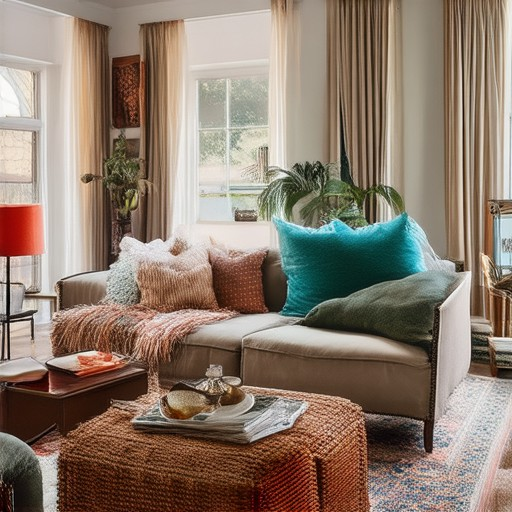
How to Style an Eclectic Home
To style an eclectic home, focus on creating a cohesive yet unique atmosphere by thoughtfully combining different design elements and textures. Here’s a step-by-step guide:
- Establish a Color Palette: Choose a neutral base, such as beige, light gray, or cream, to serve as a foundation. Introduce a pop of color with a single accent color, like a vibrant blue or soft lavender, to add interest without overwhelming the space.
- Mix Furniture Styles: Combine contrasting furniture pieces from various periods. For instance, pair a mid-century modern sofa with a Victorian-style coffee table or integrate a rustic wooden dining table with contemporary chairs.
- Emphasize Textures: Incorporate a variety of textures through materials like velvet upholstery, woven baskets, and patterned rugs. This adds visual interest and creates a layered effect.
- Layer Lighting: Use a combination of lighting types. Statement lighting, such as a crystal chandelier or bold pendant, can add drama, while table lamps and wall sconces provide task and ambient lighting.
- Add Accessorises Thoughtfully: Personalize the space with unique accessories, such as vintage artwork, antique trays, or plants with distinctive features. These items add character and reflect your personal style.
- Create a Coherent Layout: Define distinct zones using rugs and seating arrangements. For example, place a cozy chair and an area rug near a window for a relaxing reading nook or arrange a bench and cushions for a casual seating area.
- Consider Window Treatments: Opt for curtains or blinds that complement the room’s overall aesthetic. Sheer fabrics offer a lightweight, airy feel, while heavier drapes can add sophistication and contrast.
By balancing these elements, you’ll create a home that feels eclectic yet harmonious, reflecting your unique personality and style preferences.
Colors That Work Well in Eclectic Homes
Eclectic home design embraces a mix of styles and periods, so the color palette should reflect this diversity. Here are some effective color choices for creating an eclectic living space:
- Bold Jewel Tones: Introduce drama with deep, saturated colors like emerald green, sapphire blue, and rich red. These hues add contrast and visual interest.
- Neutral Base: Use soft grays, muted browns, and beiges as a neutral foundation. These colors provide a blank canvas for bolder accents.
- Warm and Cool Palettes: Balance warmth and coolness by incorporating warm colors like terracotta and yellow with cooler tones like blue-green.
- Complementary Colors: Pair a dominant color with its complement for vibrant contrast. For instance, deep navy with soft coral or rich mustard with clean white.
- Black and White: Incorporate black and white for sophistication. These colors enhance other hues and create a timeless look.
- Metals and Accents: Add elegance with gold, silver, or bronze accents. These metals tie different color schemes together without overwhelming the space.
Examples of Color Combinations:
- Navy blue walls with gold accents and coral touches create a sophisticated yet vibrant space.
- Earthy tones like olive green, tan, and cream, accented with fuchsia, offer a warm and lively atmosphere.
Remember, the key to an eclectic space is variety and balance. Use a dominant color with several supporting hues to create a harmonious yet exciting environment.
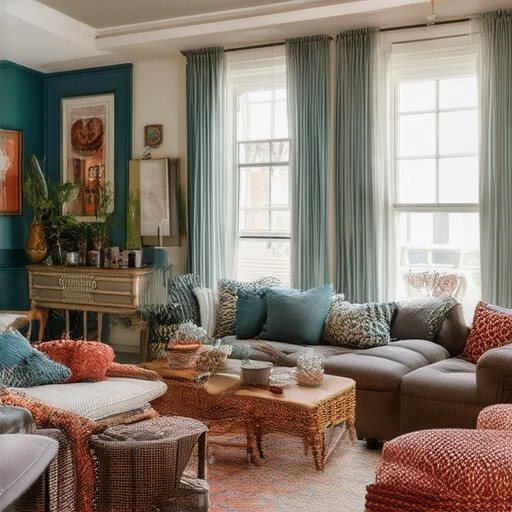
Common Eclectic Mistakes
Eclectic interior design combines diverse styles and elements to create a unique and visually interesting space. However, achieving this look requires careful planning and avoiding common pitfalls. Here are some frequent mistakes to watch out for:
1. Overcrowding the Room
While eclectic design embraces diversity, it’s important not to overload a space with too many pieces. A room filled to the brim can feel cramped and chaotic, detracting from the intended aesthetic. Stick to a cohesive layout by selecting a few standout pieces that complement each other without overwhelming the space.
2. Neglecting Balance
Eclectic designs often experiment with contrasting colors, textures, and styles, but balance is key. Without it, the room may feel jarring or uninviting. Ensure that larger pieces like furniture and rugs don’t overshadow smaller decor items, and vice versa.
3. Forgetting Functionality
Eclectic designs can sometimes prioritize aesthetics over practicality. For instance, a room filled with fragile decor may not be family-friendly, or a seating arrangement may lack comfort. Always consider how the space will be used and ensure it remains functional.
4. Color Clashing
Mismatched colors can quickly ruin an otherwise cohesive look. Before adding a new piece, consider how it interacts with existing hues. Use a neutral base and introduce pops of color through accents or statement pieces to maintain harmony.
5. Ignoring Scale
Large-scale furniture or artwork can dominate a room, making it feel unbalanced. Always assess the size of each piece relative to the room’s dimensions to ensure it fits seamlessly into the overall layout.
6. Underestimating Texture
Eclectic designs thrive on texture, but overdoing it can lead to visual fatigue. Mix textures subtly—perhaps a soft rug under a bold sofa or a textured blanket tossed on a smooth chair—to enhance dimension without overwhelming the senses.
7. Forgetting About Proportion
Proportion is crucial in eclectic design. A small room with oversized furniture or a large artwork can feel claustrophobic, while a sparse space with tiny decor can appear bare. Find a middle ground that feels both comfortable and curated.
8. Overlooking Lighting
Lighting plays a pivotal role in transforming a space. Use a combination of task lighting, ambient lighting, and accent lighting to create layers of light and highlight key features in the room. Poor lighting can make even the most eclectic spaces feel dull.
9. Not Balancing Patterns
Eclectic designs often feature a mix of patterns, from geometric tiles to floral wallpaper. Too much pattern can create visual chaos. Opt for a neutral ground or a unifying element like a continuous stripe or solid-colored accents to tie everything together.
10. Forgetting About Accessories
Don’t underestimate the power of accessories in completing an eclectic look. Curtains, cushions, and decorative objects can act as bridges between disparate styles, adding personality and cohesion to the space.
Tips for Success
- Start with a neutral palette and introduce colors gradually.
- Mix textures sparingly and ensure they complement each other.
- Choose versatile pieces that can adapt to different styles.
- Accessorize thoughtfully to enhance the overall vibe.
- Consider the room’s functionality before adding decor.
By avoiding these common mistakes and focusing on thoughtful curation, you can create an eclectic space that’s both stylish and inviting. Remember, the key to成功 lies in balance, contrast, and a touch of creativity.
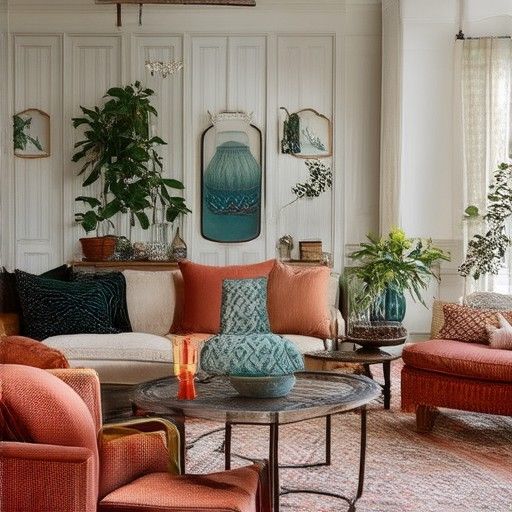
What Defines an Eclectic House Style?
An eclectic house style is characterized by a deliberate and intentional blend of diverse architectural influences, time periods, and cultural elements, creating a unique and harmonious living space. This style is not a haphazard collection of mismatched items but a thoughtful integration of various design traditions, resulting in a visually rich and distinctive environment.
Key aspects of an eclectic house style include:
- Historical Influence : Eclectic designs often draw inspiration from classical antiquity, Renaissance, Baroque, Victorian, and other architectural periods. Features such as columns, arches, ornate moldings, and unique rooflines reflect this historical synthesis.
- Cultural Influence : The style incorporates elements from different global architectural traditions, such as Islamic architecture with its intricate tilework and arches, or Chinese architecture with its distinct building proportions and detailing.
- Functionality and Practicality : While focused on aesthetics, eclectic design prioritizes functionality. The arrangement of spaces and the placement of furniture are carefully considered to ensure usability and comfort.
- Color and Texture : Eclectic interiors often feature a variety of colors and textures, using materials like wood, stone, metal, and fabric to create depth and dimension. Bold color choices and contrasting textures enhance the eclectic vibe.
- Layered Accessories : Beyond the built environment, accessories such as artwork, lighting fixtures, and textiles contribute to the eclectic atmosphere, adding personality and interest to the space.
By thoughtfully combining these elements, an eclectic house style creates a unique and inviting living space that reflects a broad spectrum of design influences and cultural perspectives.
Bohemian vs. Eclectic Design
Bohemian and eclectic are two distinct design styles that share common elements but express them differently. Here’s a breakdown of their differences:
Bohemian Design
- Characteristics: Casual, laid-back, and unconventional. Emphasizes individuality and self-expression.
- Elements: Vibrant colors, handcrafted items, and a mix of textures. Often features flea market finds and eclectic pieces.
- Essence: Organic, relaxed, and free-spirited. Focuses on creating a space that feels lived-in and comfortable.
Eclectic Design
- Characteristics: Deliberate mix of various styles from different periods and cultures. More structured and curated.
- Elements: A blend of architectural elements, antiques, and contemporary furnishings. Often combines Renaissance, Victorian, and mid-century modern styles.
- Essence: Thoughtful and intentional. Eclectic design aims to create a conversation piece through the mix of contrasting styles.
Key Differences
- Approach: Bohemian is more about personal style and individuality, while eclectic focuses on a deliberate blend of multiple styles.
- Aesthetic: Bohemian leans toward a relaxed, organic aesthetic, whereas eclectic can feel more curated and structured.
- Color Palette: Bohemian often uses bolder, richer hues, while eclectic may incorporate a variety of colors in a more balanced way.
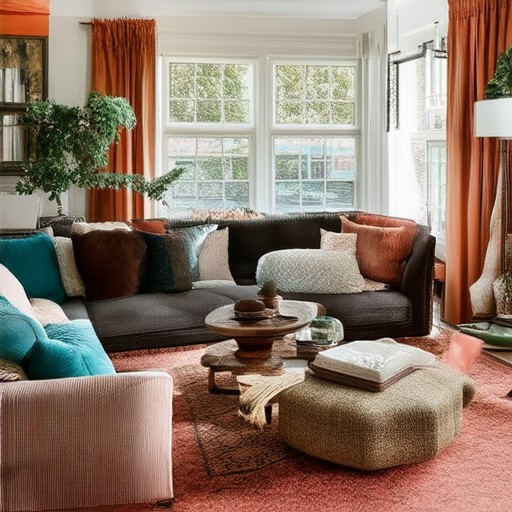
What Makes a House Neo-Eclectic?
A neo-eclectic house is a modern take on eclectic architecture, blending various design influences to create a unique and visually striking property. Here are the key characteristics that define this style:
- Mixed Architectural Styles: Neo-eclectic homes often combine elements from different architectural movements, such as Victorian, Georgian, and modern designs, creating a eclectic mix that stands out.
- Ornate Details: This style emphasizes intricate detailing, such as heavy moldings, ornate woodwork, and classical-inspired elements, giving the house a rich, historic feel.
- Contemporary Materials: While it draws inspiration from traditional designs, neo-eclectic homes frequently incorporate contemporary materials and construction techniques, balancing old-world charm with modern convenience.
- Exterior Cladding: Exterior walls may feature decorative cladding, such as shiplap, board-and-batten, or stucco, adding texture and visual interest to the facade.
- Window Designs: Windows are often multi-paned, arched, or feature transoms, mimicking traditional designs while providing ample natural light and ventilation.
- Trim and Molding: Detailed trim work, including baseboards, ceiling medallions, and door surrounds, is a hallmark of this style, often executed in foam core with stucco or paint finishes.
Historical Context
Neo-eclecticism emerged in the late 20th century as a reaction against minimalist and modernist trends, offering homeowners a chance to embrace opulence and detail in their living spaces.
Why Choose a Neo-Eclectic Style?
This style appeals to those who love the grandeur of traditional architecture but desire the functionality and simplicity of modern living. It offers a versatile option that can adapt to various lifestyles and settings, whether in an urban loft or a suburban estate.
Conclusion
A neo-eclectic house is a harmonious blend of classic and contemporary elements, creating a distinctive and inviting space that reflects individual taste and architectural innovation.
For more insights into designing and decorating a neo-eclectic home, explore our guide on Interior Design Ideas for a Neo-Eclectic Home .

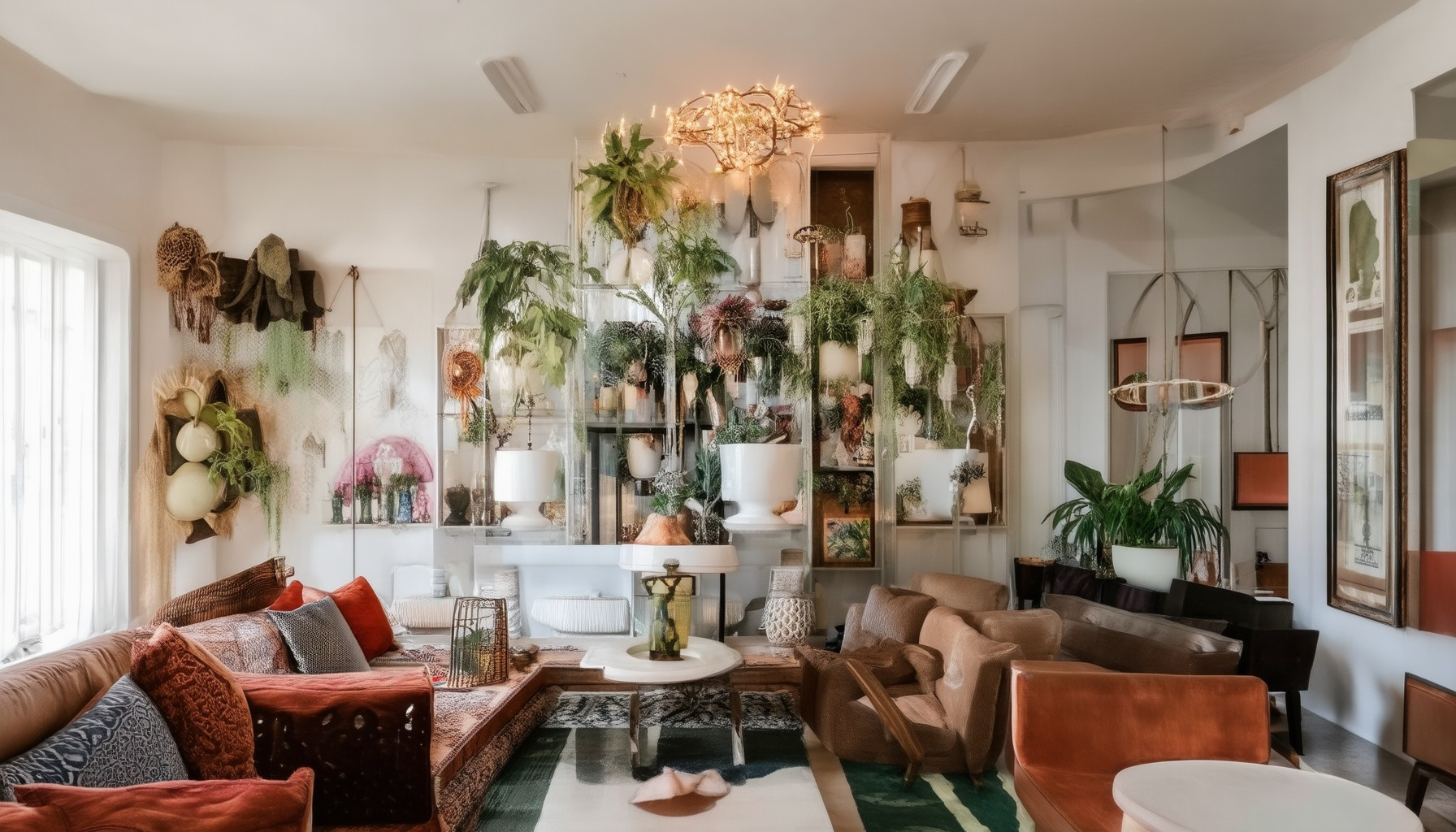
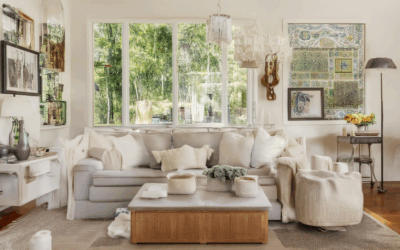
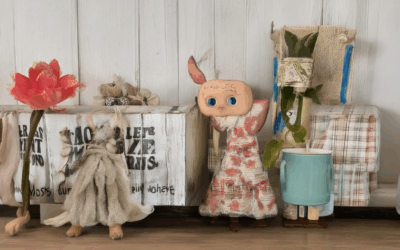
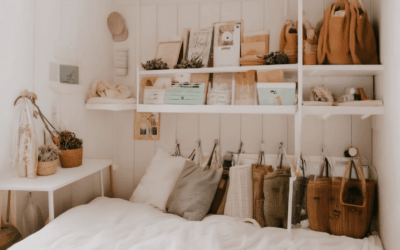
0 Comments